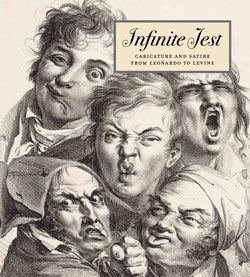The Five Orders of Periwigs
Artist and publisher William Hogarth British
Not on view
Hogarth here applied the terminology of classical architecture to men’s wigs to satirize the divisions of British society. With mock seriousness, he arranged wig types in rows as though in an architectural treatise. Echoing the names of column capitals he labeled his specimens "Episcopal," "Old Peerian," "Aldermanic," "Lexonic," and "Queerinthian." The humor was inspired by a pompous advertisement for James Stuart’s and Nicholas Revett’s forthcoming book The Antiquities of Athens. Hogarth’s focus on the "orders" of British society had been sharpened by the September 1761 coronation of King George III and Queen Charlotte. A row of female heads at the bottom of the print refers to that event, with the queen shown at left. Her companions are differentiated not by their hairstyles, but by their coronets which identify them in descending rank as princess, duchess, countess, vis-countess and baroness.
Due to rights restrictions, this image cannot be enlarged, viewed at full screen, or downloaded.



